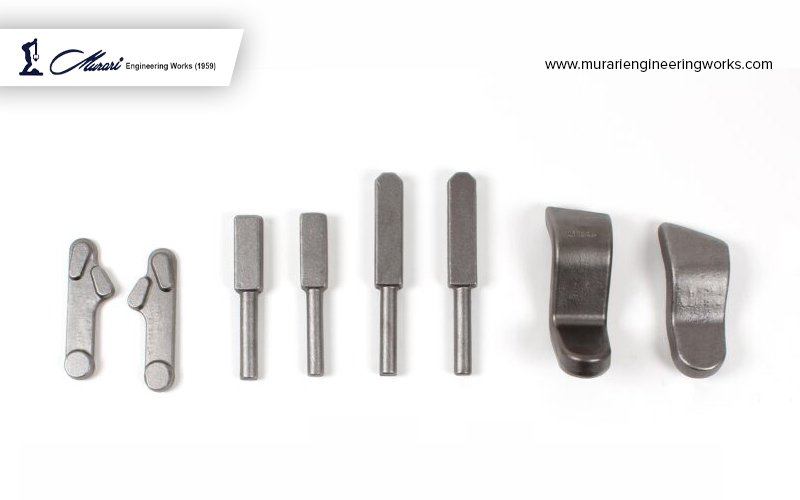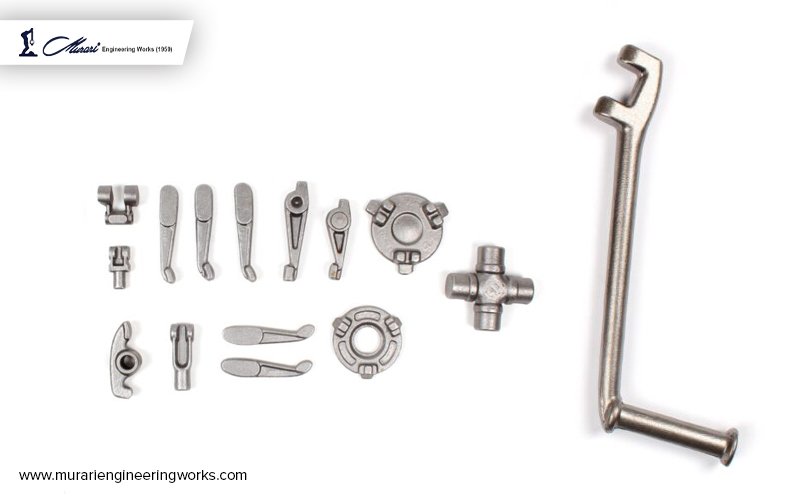The automotive industry is one of the most dynamic and competitive sectors, constantly evolving to meet the ever-changing demands of consumers. As the demand for high-quality, durable, and reliable automotive components increases, forging has emerged as a critical manufacturing process for producing automotive parts. In this blog, we will delve into the world of automotive parts forging, with a focus on the forging units in Ludhiana and Punjab, known for their expertise in tractor parts forging.
Forging Units in Ludhiana and Punjab: A Hub for Automotive Parts Forging
Ludhiana, located in the state of Punjab, is renowned for its vibrant manufacturing ecosystem, with a rich history of metalworking and forging expertise. The region is home to several forging units that specialize in automotive parts forging, including tractor parts forging. These forging units are equipped with state-of-the-art machinery, skilled workforce, and quality control measures to produce high-quality forged components that meet the stringent requirements of the automotive industry.
Automotive Parts Forging: The Process
Forging is a manufacturing process that involves shaping metal by applying localized compressive forces. It is a hot forming process, wherein the metal is heated to a high temperature and then shaped using a die or a hammer to achieve the desired shape and properties. Automotive parts forging typically involves the following steps:
- Material Selection: The first step in the forging process is selecting the appropriate material for the desired automotive part. Common materials used in automotive parts forging include steel, aluminum, and titanium, depending on the specific application and requirements.
- Heating: The selected material is heated to a precise temperature to make it malleable and easy to shape. The temperature and heating time are carefully controlled to achieve the optimal metallurgical properties of the forged component.
- Shaping: Once the material reaches the desired temperature, it is shaped using a die or a hammer. The metal is subjected to localized compressive forces, which deform it to take the shape of the die or hammer. This process results in the formation of the desired automotive part with high accuracy and consistency.
- Finishing: After shaping, the forged component may undergo additional finishing processes, such as trimming, cutting, and machining, to achieve the final dimensions and surface finish. This ensures that the forged component meets the required specifications and tolerances.
- Heat Treatment: Some automotive parts may undergo heat treatment after forging to further enhance their mechanical properties, such as hardness, toughness, and strength. Heat treatment processes, such as quenching and tempering, are carefully controlled to achieve the desired material properties for the specific application.
- Inspection and Quality Control: Throughout the forging process, strict quality control measures are implemented to ensure that the forged components meet the required specifications and standards. Metallurgical testing, dimensional inspection, and non-destructive testing are commonly used to ensure the quality and reliability of the forged automotive parts.
Importance of Automotive Parts Forging
Forged automotive parts, including tractor parts, play a critical role in the performance, durability, and safety of vehicles. Here are some key reasons why automotive parts forging is important in the automotive industry:
- Strength and Durability: Forged components are known for their exceptional strength and durability. The compressive forces applied during the forging process align the grain structure of the metal, resulting in improved mechanical properties, such as higher tensile strength, toughness, and fatigue resistance. This makes forged automotive parts capable of withstanding extreme loads, vibrations, and harsh operating conditions, ensuring the safety and reliability of vehicles.
- Precision and Consistency: Automotive parts forging offers high accuracy and consistency in the production of complex shapes and geometries. The use of dies or hammers allows for precise shaping of the material, resulting in components with tight tolerances and minimal dimensional variations. This is critical in the automotive industry where components need to fit together seamlessly and function smoothly. The precision and consistency of forged components contribute to the overall performance and efficiency of vehicles, ensuring optimal functionality.
- Cost-effectiveness: While the initial setup costs for forging units may be higher compared to other manufacturing processes, the long-term cost-effectiveness of forged automotive parts is undeniable. The strength and durability of forged components result in longer service life and reduced maintenance costs. Moreover, the precision and consistency of forged components minimize scrap and rework, reducing overall production costs. This makes automotive parts forging a cost-effective option in the long run.
- Design Flexibility: Automotive parts forging offers design flexibility, allowing for the production of complex shapes and geometries that may not be achievable through other manufacturing processes. The use of dies or hammers allows for intricate detailing and customization of components, meeting the specific requirements of different automotive applications. This design flexibility enables the production of unique and innovative components, giving manufacturers a competitive edge in the market.
- Material Properties: Forging allows for the use of a wide range of materials, including steel, aluminum, and titanium, depending on the specific application requirements. These materials offer excellent mechanical properties, such as high strength, toughness, and heat resistance, making them ideal for critical automotive applications. Moreover, the controlled heating and cooling during the forging process can further enhance the material properties, resulting in components with superior mechanical characteristics that meet the stringent requirements of the automotive industry.
- Reliability and Safety: Automotive parts, including tractor parts, need to be reliable and safe to ensure the overall performance and safety of vehicles. Forged components are known for their high reliability and safety due to their exceptional strength, durability, and precision. They are capable of withstanding extreme loads, vibrations, and harsh operating conditions, minimizing the risk of component failure and ensuring the safety of the vehicle and its occupants. This makes automotive parts forging a critical process in ensuring the reliability and safety of automotive components.
- Environmental Sustainability: Automotive parts forging is also environmentally sustainable compared to other manufacturing processes. The high material utilization and minimal scrap generation during the forging process contribute to reduced waste and environmental impact. Moreover, the durability and longer service life of forged components result in reduced replacement and disposal of parts, further reducing the environmental footprint of the automotive industry.
In conclusion, automotive parts forging is a critical manufacturing process that plays a crucial role in the automotive industry, including tractor parts manufacturing in Ludhiana and Punjab. The strength, durability, precision, design flexibility, material properties, reliability, safety, and environmental sustainability of forged components make them indispensable in the production of high-quality, durable, and reliable automotive parts. The expertise of forging units in Ludhiana and Punjab in producing tractor parts using the forging process has made them a hub for automotive parts forging, meeting the increasing demand for high-quality components in the automotive industry. As the automotive industry continues to evolve, automotive parts forging will continue to be a key process in producing components that meet the ever-growing demands of consumers for safe, reliable, and high-performance vehicles.


